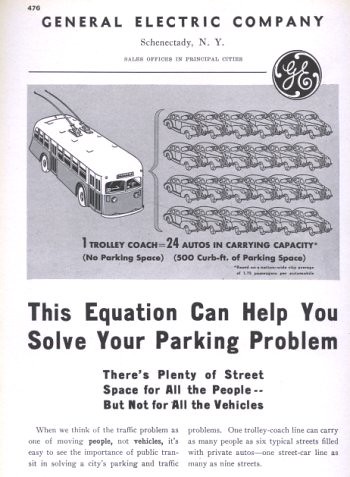Public transit campaign to pass the federal surface transportation bill
It's not news to readers of this blog and others that there is a great tension between the "road" lobby, which is focused on building highways for the most part and continuing to extend the automobile-based mobility paradigm, and the sustainable transportation lobby, which either separately or together works to promote walking, bicycling, and transit. (Walking and bicycling are also referred to as "active transportation" modes.)
Like so much else in American society and public opinion, this issue is contentious, in part because it comes down to the difference between personal mobility and mass mobility and optimal use of scarce public and private resources.
For me, not owning a car means that I can "afford" to still own a house in a relatively expensive housing market in a fairly good, well-connected location, while working in public interest type jobs where I often don't make that much money (oh, but the psychic rewards....) compared to the private sector.
I can do this because I have the benefit of access to a robust local transit system (subway and bus service), complemented by regional commuter railroad service to either Maryland or Virginia through separate services, in a community where a certain number of my typical daily destinations (work, school, stores, post office, libraries, parks, etc.) are also accessible to me by either walking or biking as well.
Walking, Bicycling, and Transit Work Together

Catchment area or "mobility shed" of public transit stops for pedestrians and cyclists. Image from Planning and design for pedestrians and cyclists published by VeloQuebec.
This is a potential competitive advantage for many center cities, and it is an advantage already present in cities like New York City, Boston, Philadelphia (although it could be better leveraged), Chicago, San Francisco, and Washington.
In cities like Baltimore, it doesn't work at present because the fixed rail transit network isn't very extensive, but it could, with more investment, and instead of being a declining city, Baltimore would be able to reposition as a community of choice.
----------------
The American Public Transportation Association (APTA) is leading a major initiative to encourage U.S. lawmakers to pass a long-term surface transportation bill. It was up for reauthorization about two years ago, but a new comprehensive bill hasn't been created or passed, they merely extended the term of the previous bill.
APTA’s basic position is that public transit plays a huge role in our local and national economies and advances the nation’s position toward a cleaner environment and energy independence. Quality of life is also, of course, a huge pillar underlying the importance of public transportation.
As part of the “Public Transportation Takes Us There” campaign, APTA has an online petition to connect and collect and codify the collective voice of public transit users and supporters nationwide.
This initiative will culminate in a presentation of the petition to legislators at a major Capitol Hill event in late September.
Why I will sign the petition
Because transit enables quality of life, convenience, mobility, and freedom to get around without a car.
What do I mean by optimality?
Transit, walking, and biking are the most space efficient and cost effective ways to get people from place to place (provided there is tight connectivity between origins and destinations, density, and mixed uses--see both Jane Jacobs Death and Life of Great American Cities and Steve Belmont's Cities in Full for the details).
The Urban Ambassadors group of sustainability advocates in Des Moines, Iowa did one of those events, where they compared how much space is required to move 40 people, and took photos. (Their final version of a poster is one of the best, using the photos with additional graphic design elements to make the point simply and effectively.)

Also see this article about their project, "Photos offer a challenge: Consider your commute from the Des Moines Register.

GE Streetcar/trolleybus ad, 1940.
Labels: civic engagement, electoral politics and influence, optimal mobility, sustainable land use and resource planning, transit, urban design/placemaking




1 Comments:
nice information.Buy this medicine getting best results, also you can buy form online pharmacy or online medicine store or buy medicine online.
Post a Comment
<< Home